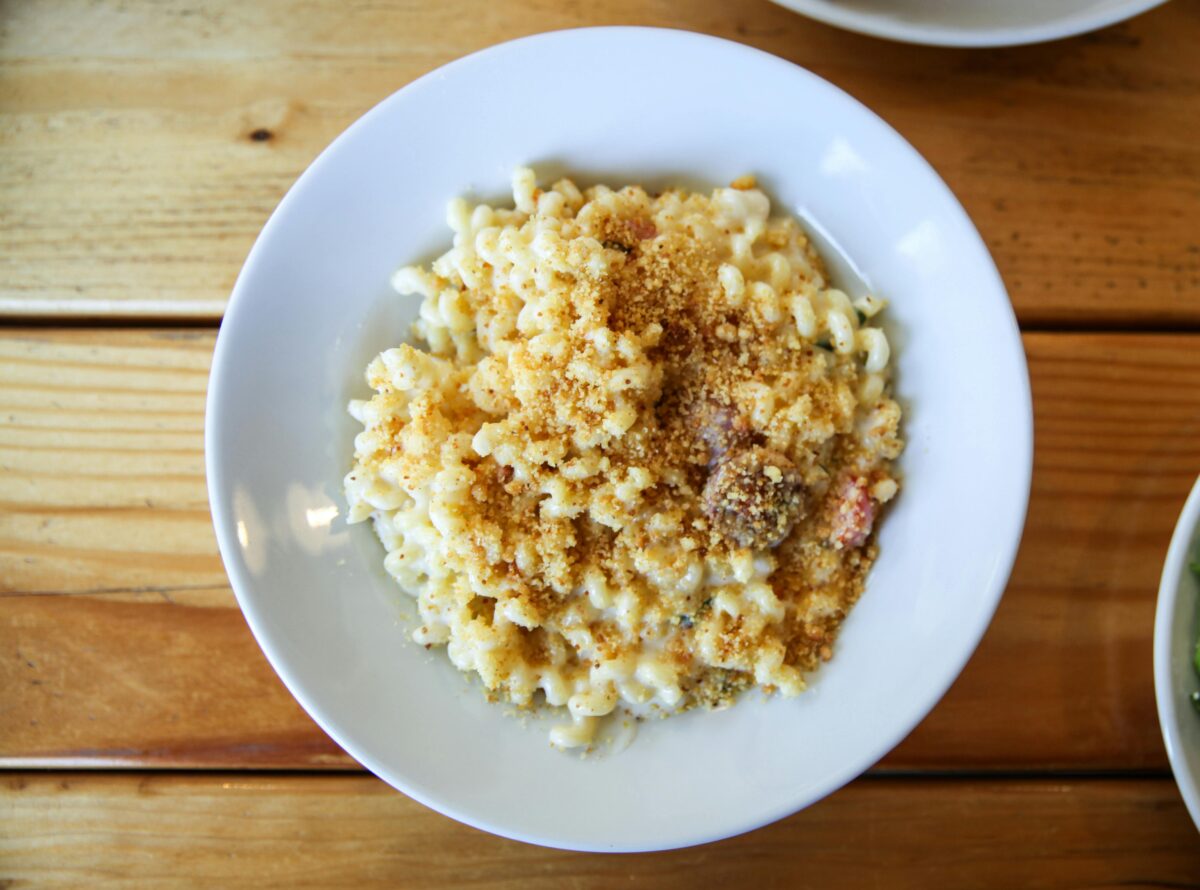Hey friends, Chef Nora here again with Simply Smart Dinner Plans. Today, we’re diving into one of the most common cooking questions I get: “How do you make a proper roux without all those lumps and clumps?”
You’re not alone—lots of folks struggle with this. But the truth is, making a roux (and turning it into a silky béchamel and then into a glorious cheese sauce) is easier than you think…as long as you follow a couple of key steps. And since I can’t leave well enough alone, we’re going all the way to Next Level Mac & Cheese by the end of this recipe.
Ingredients:
- 3 tbsp butter
- 4 tbsp flour
- 2 cups hot milk (almost boiling)
- 1 cup shredded extra sharp cheddar (plus more for topping)
- 1 lb whole wheat penne pasta, cooked al dente
- Salt & black pepper (to taste)
- Optional: chili powder, cayenne, or paprika
- Optional add-ins: seared sausage, steamed broccoli
Step-by-Step Recipe
So, let’s start with the roux. That’s just fat plus flour—nothing fancy. In our case, I’m melting 3 tablespoons of butter over medium heat and whisking in 4 tablespoons of flour. Stir it around until it’s smooth and evenly combined. Don’t freak out if you see a few little lumps, we’re going to whisk those out later.
Cook this mixture for about 2 minutes. That’s enough to get rid of the raw flour taste but still keep its thickening power. Roux actually comes in four shades—white, blonde, brown, and dark brown. The darker you go, the more flavor you get, but you lose thickening ability. Today, we’re sticking with a nice white roux.
Next step: béchamel. This is one of the French mother sauces. Here’s where a lot of folks (including John) hit a snag—never add cold milk to your hot roux. Cold liquid will seize up and turn into lumps faster than you can say “Why me?!” Always heat your milk first.
I’m adding 2 cups of very hot milk to my roux, whisking constantly. After 3–4 minutes, it thickens up beautifully and comes back to a boil. Keep whisking like crazy so it doesn’t scorch on the bottom. Once it coats the back of a spoon, you’re golden. Season with about a teaspoon of salt and a few grinds of fresh black pepper.
Now comes the fun part: turning that béchamel into a cheese sauce, or as the French like to call it, mornay sauce. I like a 2:1 ratio, so one cup of shredded sharp cheddar for every two cups of white sauce. Stir until smooth and melty. If it gets too thick, add a splash of hot milk—just a tablespoon at a time—until it loosens back up.
At this point, you could stop and pat yourself on the back. But me? I’m in it for the mac & cheese. I’ve got a pound of al dente whole wheat penne waiting. Add it to the sauce a ladle at a time, stirring gently, and don’t be afraid to use a little pasta water to help everything come together.
Because cheese is life, I sprinkle in a little more cheddar on top right before serving. Sometimes I’ll kick it up with chili powder, cayenne, or paprika. And since “good enough” is never good enough in my kitchen, I’ll often toss in seared sausage for smoky flavor and steamed broccoli for a veggie boost. Yes, I spilled some while mixing—but hey, it’s a home kitchen. Spills happen.
And there you have it—ooey, gooey, cheesy mac that makes everyone at the table happy.
Extra Notes & Tips
- Hot liquid is non-negotiable: Cold milk + hot roux = lumps galore.
- Cheese choices: Sharp cheddar is my go-to, but gruyere, fontina, or even pepper jack will give you amazing results.
- Make-ahead: The cheese sauce can be made up to 2 days ahead. Reheat gently with a splash of milk.
- Storage: Store leftovers in the fridge up to 3 days. Add a little milk or cream when reheating to bring back the creaminess.
- Vegetable bonus: Mac & cheese is a sneaky way to get picky eaters to eat broccoli, spinach, or even roasted cauliflower.
So, that’s how you go from a simple roux to a silky béchamel, to a glorious mornay sauce, and finally to mac & cheese that will make your family worship you (or at least forgive you for spilling cheese sauce on the counter).
Now if you’ll excuse me, I’ve got a pan of mac and cheese calling my name.
